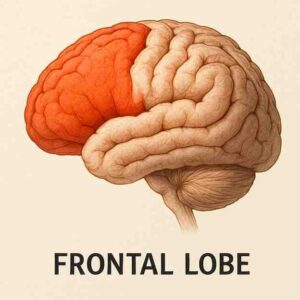Why a surgeon chooses to work for a pittance at a public hospital while having a flourishing private career. And other baffling questions of balance an swered
swered
“Sir, ek EDH hai, casualty mein. One pupil is not reacting,” the resident doctor manning the emergency department at Mumbai Central’s Wockhardt Hospital tells me at 3 am. EDH refers to extradural hematoma, a blood clot which, if expands rapidly, is known to cause death. The pupil not reacting is a clinical indicator of the balance already tipped against the patient. This is the mother of all neurosurgical emergencies, one where ‘time is brain’. A surgery performed quickly can miraculously even awaken a comatose patient.
I reach the hospital within 15 minutes and the patient is already in the operating room. A brisk chat with the family later, I perform the surgery, with members of my team playing their part to the hilt. The pupil starts reacting to a bright light shone straight into the patient’s eye—a sign of relief for any surgeon. I speak to the family, this time at length, reassuring them of a reasonably good anticipated outcome, grabbing a chai on my way out.
By then, it is 8 am and time to head to JJ Hospital, 10 minutes away. Here, I serve as an honorary, a position granted to provide an almost free service to the hospital. The department of neurosurgery at JJ is headed by the stoic and compassionate Dr Vernon Velho, who works here full-time, tirelessly treating everyone who walks in with equal sincerity. Most patients here are referred for surgery from all across Maharashtra and central India.
That morning, we see around 40 of them in the outpatient clinic within three hours, following which I head to the operating room to perform the day’s surgery on a gentleman with tuberculosis of the spine, a condition that has compressed his spinal cord. We put in some screws and realigned the spine, while in the adjacent theatre, another member of the team removes a large brain tumour, with Dr Velho guiding the surgeon, watching him on a large monitor. He ensures that every step is meticulously performed. He is always ready to ‘scrub in’, lend a helping hand. This is how most junior doctors receive their training, often late into sleepless nights, so that when they go back to their homes in little towns of India, they are able to set up independent practices. This is also how generations of medical stalwarts in Mumbai have built legacies, through the mentoring of excellence in their students.
Hospitals like JJ are a boon for the under-privileged, and each time I step in, I pay homage to the statue of Sir Jamsetjee Jeejebhoy that stands in the foyer. The philanthropist offered a donation of R1 lakh to build the hospital in 1845. Today, it has a bed strength of 3,000, catering to one lakh inpatients annually. And yet, in my opinion, treatment and care that may carry the illusion of being sub-optimal is never compromised despite the myriad difficulties, and the dismal salary offered to full-time professionals.
It’s 4 pm by the time I am done with the surgery. Once I’ve checked that my patient has woken up well, with all neurological functions intact, I head back to Wockhardt,
in a blue Maruti 800. It’s a car that does not allow the Mumbai traffic to get the better of me. I ’round’ on all my patients admitted in the ward and the ICU. The patient we operated on in the early hours that morning is sitting up in bed, bright and alert.
It’s then about servicing 14 appointment patients in the private hospital, in the same time that we took to see 40 patients in the civic hospital. I grab my second chai of the day with a snack to stop the tummy from rumbling.
I head out of the hospital for the day at 9 pm. Right before I get home, the resident doctor calls. “Sir, ek ruptured aneurysm aya hai; I’m shifting him to surgery. The family has been spoken to.”
I make a U-turn around the next traffic signal, and within the hour, I’m looking inside the crevices of another brain, applying a 7 mm titanium clip to a damaged blood vessel to secure it from re-bleeding. It’s now 1 am and I drive back home with the windows down, the breeze bouncing off my face as I listen to the late Jagjit Singh on the radio.
We have a name for days like these: Thursday.
The combination of pursuing academic neurosurgery at a public hospital while working at a private set-up is what some term “privademic.” It allows you the security of a relatively comfortable life while gaining limitless exposure in an unadulterated academic environment. With no dearth of patients, the entire spectrum of neurosurgical case studies unfolds before you like a textbook of medicine.
This dual life improves my clinical judgement, refines surgical skill, bolsters resilience, and harnesses my capacity for compassion. It allows me to feel grateful, be intentional, teach and learn simultaneously.
The writer is practicing neurosurgeon at Wockhardt Hospitals and Honorary Assistant Professor of Neurosurgery at Grant Medical College and Sir JJ Group of Hospitals



